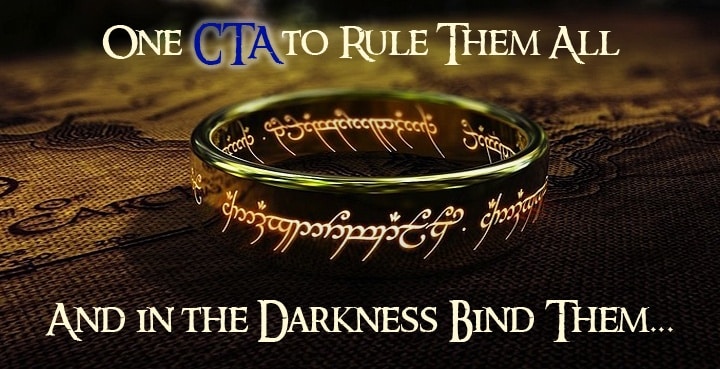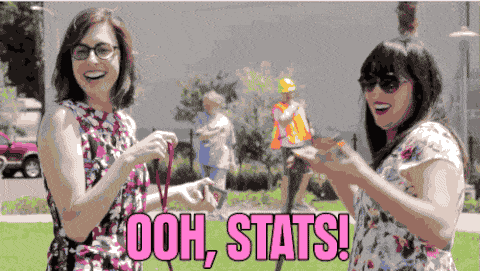C.O.N.F.E.S.S.I.O.N. of a CRO Designer
by Manny Lopez • March 25, 2016
Have you ever wondered what a “creative” needs in order to give you a landing page that is going to convert for your client and get a great ROI?
Well, I’m going to let you in on a little secret…my designer CONFESSION, as it were.
The best-designed landing pages come from great collaborative effort, but it’s not always easy to know what your CRO designer needs. So, to help you get inside your designer’s head, I’ve broken things down into a helpful acronym.
With that, here’s my designer C.O.N.F.E.S.S.I.O.N.—what makes me tick and helps me provide your visitors with an all-star landing page experience.
Concrete Direction
All creatives love great direction, it helps us focus our creative energy into great CRO design. But, direction is best when it is a collaborative effort.
It’s always a fantastic idea to get together with an Account Manager and really hash out a solid game plan for the landing page and any display ads.
As a designer, the better I understand your target market, keywords and ad copy, the better the landing page experience I can craft for your visitors.
It takes a bit of extra upfront time, but in the long run it results in fewer edits and better results.
Optimized Content
Optimize content is how you introduce yourself to the user. It’s a mix of exciting, dynamic headlines, informative sub-headers and focused body copy.
From a designer’s perspective, optimized content isn’t just about writing a good headline or having great copy. It’s great copy combined with great design.
Content placement and design can have a significant impact on the effectiveness of a landing page. Even a small tweak can produce dramatically different results, which is why content design tweaks are often at the heart of most landing page A/B tests.
Perhaps the most important aspect of optimized content is your call-to-action (CTA). Regardless of how optimized the rest of your page is, it will fall short without a rock solid CTA.

Nice Branding
For a designer, getting to work with a clients with nice branding is kind of like giving a construction worker a new hammer and work boots—it’s a just plain fun!
Working with client’s brand guidelines is great for a CRO designers ensure they are on brand with their palette and image selection.
The more access we have to your creative assets, the more on point our landing page designs will be with your brand.
In addition, we should always understand the client’s brand guidelines and how to use them. Coordinating with the client or Account Manager is always a good idea just to make sure you understanding the brand.
The better we understand the brand, the more we will understand your target market. And, the more we understand your target market, the better our landing pages will be.
Fresh Ideas
Understanding the competitors and the industry is crucial in your initial discovery phase.
However, once you know what your competitors are doing and how the industry works it’s always good to brainstorm some different ideas. What isn’t being done? Can we test to see if that works better?
Sometimes, a little out-of-the-box thinking is just what you need to stand out amongst the competition!
To get different ideas, it’s often helpful to collaborate with your team. Try exploring different CTA’s and create A/B Tests. Testing out your fresh ideas can help you yield better results.
Efficient Graphics
Graphics should support the optimized copy, but they need to be helpful and insightful while captivating the audience.
The hero shot you choose can dramatically affect the overall emotion of a landing page, so it’s important to make sure that you work with your designer to pick the right image with the right feel.
Additionally, another a great way to use graphics is to illustrate data and major selling points.
For example, instead of using a traditional bulleted list, try using icons to visually illustrate the copy.
Finally, you want high quality graphics.
Monitors, tablets, and mobile device resolution is getting better all of the time, so it’s important for your designer to have high-quality graphics to work with so that they can make sure your user experience is as good as possible!
Stellar Account Management
No matter how good your designer is, if you don’t have a someone keeping the marketing train on track, your design is never going to shine.
A good marketing manager oversees the entire process, ensuring cohesive messaging from click-to-close.
Teamwork makes the dream work, right?

However, if the account manager isn’t communicating with their designer, it’s hard to produce great results. So, it’s important for the account manager and designer to review results and initial data on a regular basis.
Savory Deals or Offers
People love saving money or getting a great deal on the service or product they are looking for online! Often times a great deal or offer can drive the landing pages value proposition and CTA.
For example, if you are a SaaS company, a free demo can be a great way to get people using your software and can present a great opportunity to up-sell said user into a paying customer.
Trying out new offers during peak holiday traffic is a great strategy to boost sales for that particular season. Knowing when to run selective deals can boost that quarter’s sales.
Insightful Data
Having historical data on your client is insanely helpful for a CRO designer because it allows us to see pass traffic patterns, wins and losses.

Historical data will also help you in your optimization process because you will have a greater understanding of how previous campaigns performed and allow you to avoid remaking previous mistakes.
Outstanding Reviews
Also known as social proof, reviews are a valued commodity that every CRO designer loves.
What is social proof?
Basically, social proof is what people say about your brand and products. Since social media has taken over our lives, people often depend on the reviews of others to make a decision before purchasing something.
Fortunately, you can use this to your advantage and proudly display reviews, ratings, awards, or testimonials on your landing page.
For example, if you have an excellent rating on YELP you can display that on your page because people trust YELP reviews and that can boost a user’s trust in your product or service.
However, you want to be careful with how you use social proof on your landing page because too much can come across as overwhelming or unimpressive. It’s also important to never make up social proof or use false or edited testimonials.
Nice Layout
The last part of putting together a great landing page is laying out the page to facilitate the user experience and behaviors that will help your visitors convert.
Understanding user experience will help you place your CTAs where users are the most likely to interact with them.
Choosing the right images and positioning headlines and content purposely on the page will help your overall user experience. Lastly, make sure your value proposition is the star of the page and back it up with your CTA.
Summary
And look, I just pluralized the acronym…
Anyways, this CONFESSION should help you and your designer get synced up to produce the kind of landing page experience your campaigns need to succeed.
By the way, if you’d like me to take a look at any of your landing pages, let me know here or in the comments. I’d love to help!
Are there any ideas you’d add to this CONFESSION?





